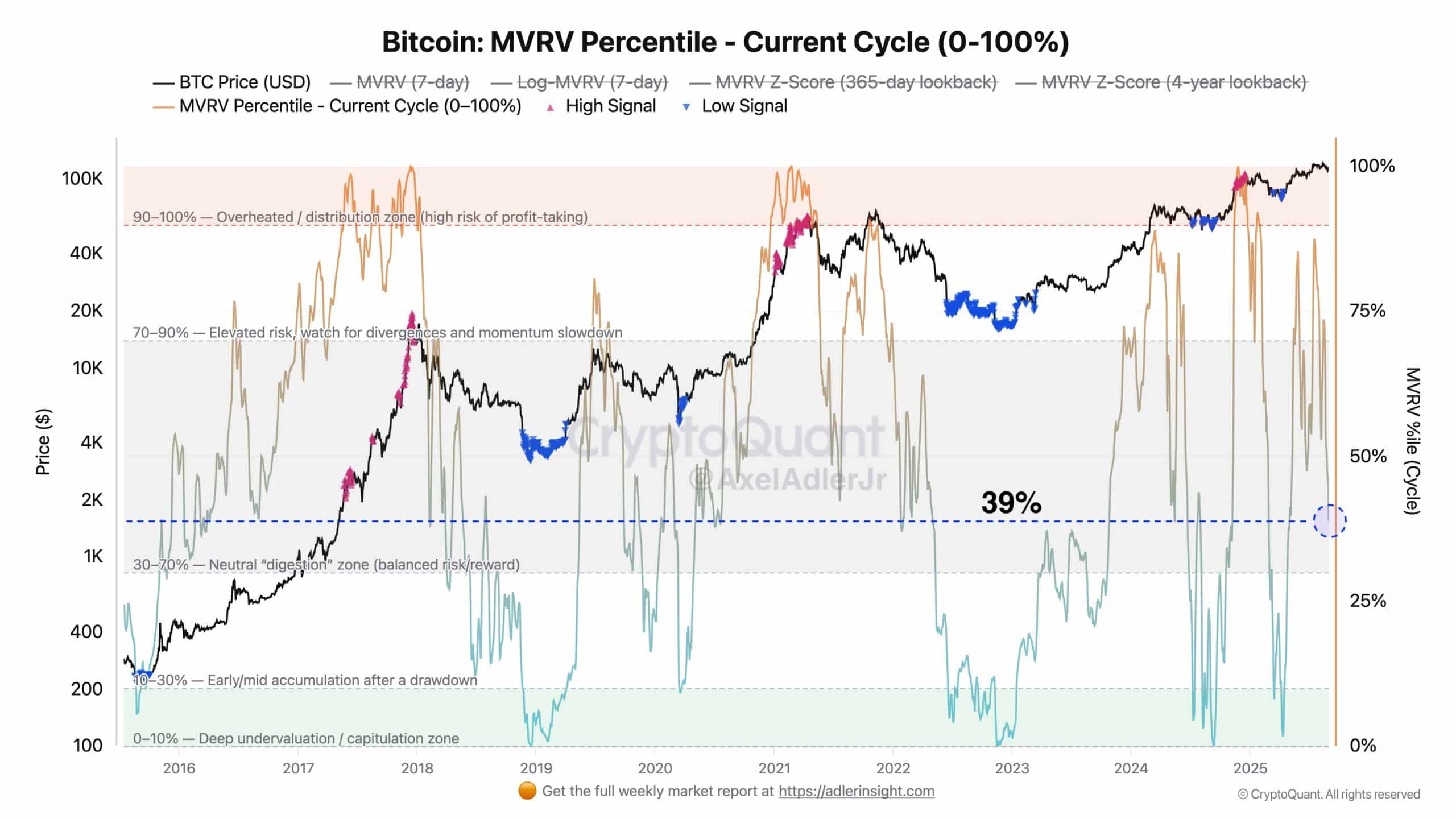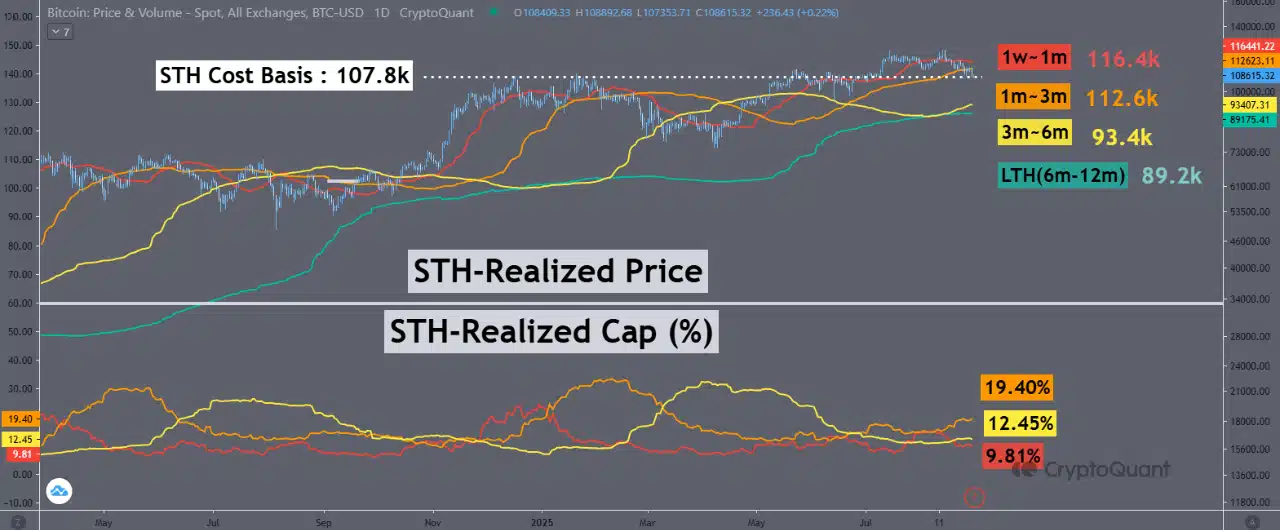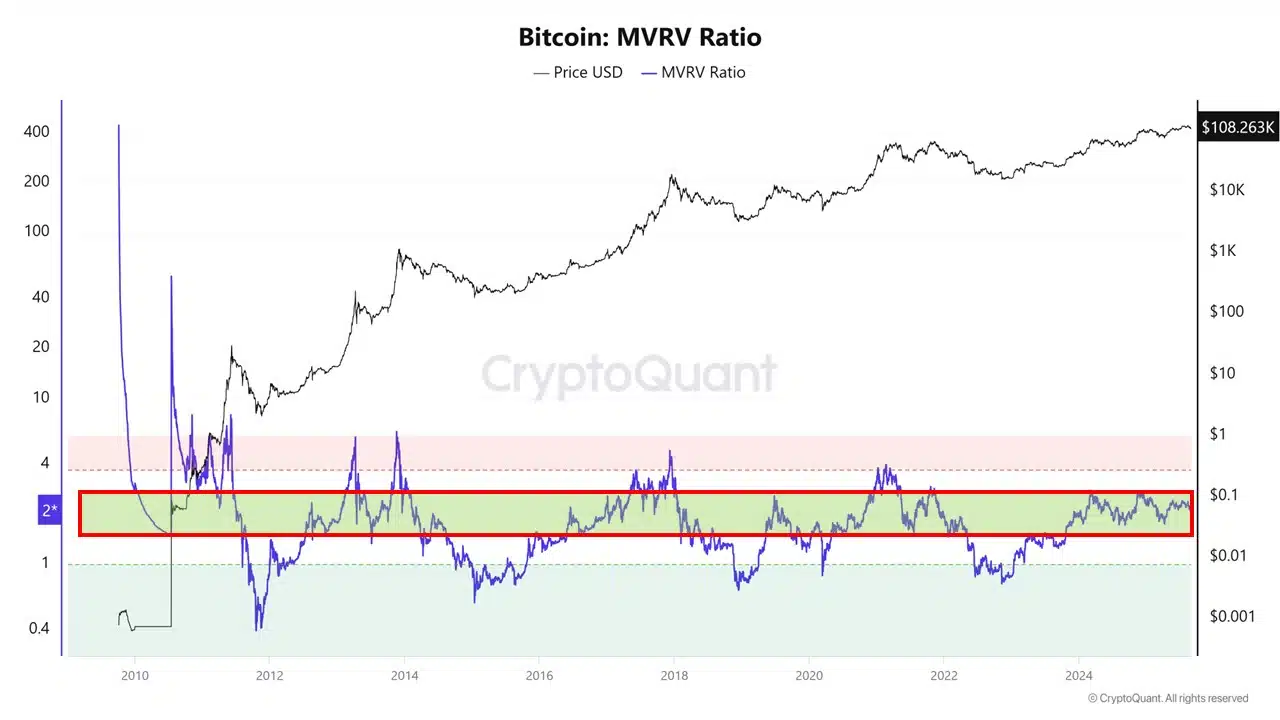Bitcoin on-chain metrics show BTC trading near the short-term holder cost basis of $107.8k, which acts as immediate support; a neutral MVRV percentile and large realized profits point to cautious sentiment while traders monitor STH SOPR and exchange flows for reliable trade setups.
-
BTC sits close to the STH cost basis at $107.8k, offering a key support level.
-
Neutral MVRV and rising Coin Days Destroyed indicate mixed conviction among holders.
-
Whale-driven realized profits near $4B and cooling spot ETF flows into BTC signal rotation risk toward ETH.
Meta description: Bitcoin on-chain metrics show BTC near the $107.8k short-term holder cost basis; learn how MVRV, STH SOPR and exchange flows guide trade setups. Read now.
What do Bitcoin on-chain metrics indicate about current price action?
Bitcoin on-chain metrics indicate that BTC is trading near the short-term holder (STH) cost basis of $107.8k, offering immediate support. Neutral MVRV readings and elevated realized profits suggest a cautious market where traders should prioritize confirmation from STH SOPR and exchange flow data before taking directional positions.
How does the MVRV percentile and STH cost basis affect support and resistance?
The MVRV percentile at ~39% signals a neutral risk/reward environment versus extreme exuberance or capitulation. The average STH cost basis near $107.8k serves as a structural support: a sustained close below this level would raise the probability of further downside while a clear rebound would validate buyer conviction.


Source: Axel Adler Jr on X
How should traders combine on-chain indicators to time entries?
Traders should use a multi-signal approach: align MVRV percentile, STH SOPR behavior, realized price bands, and exchange flows. Only when these indicators confirm each other does the trade setup improve in quality.
What are practical entry criteria based on the trader playbook?
-
Check MVRV: Avoid long entries if MVRV is below -1.5σ and cannot reclaim the mean.
-
Confirm STH SOPR: Wait for the 7-day STH SOPR MA to rise above 1 as a strength signal.
-
Validate with realized price bands: A quick rebound from 1–3 month and 3–6 month realized price bands marks structural strength.
-
Monitor exchange flows: Net outflows during entry improve trade quality.


Source: CryptoQuant
When will a BTC close below STH bands invalidate bullish setups?
A decisive close under the 1–3 month STH band for 2–3 consecutive days would invalidate short-term long setups. Traders should then revert to risk management measures and await re-confirmation across STH SOPR and realized-price rebounds.


Source: CryptoQuant
Frequently Asked Questions
What is the short-term holder (STH) cost basis and why does $107.8k matter?
The STH cost basis is the weighted average price paid by holders who acquired BTC within 1–3 months. The $107.8k level matters because it aggregates realized market cap share and often acts as a psychological and technical support for short-term price action.
How can traders use STH SOPR to spot momentum shifts?
STH SOPR above 1 indicates realized gains and selling at profit; a 7-day MA below 1 signals reset and distribution. Traders look for the 7-day STH SOPR MA to climb above 1 as confirmation before considering fresh long positions.
Key Takeaways
- STH cost basis near $107.8k: Acts as immediate support and risk reference for short-term trades.
- Neutral MVRV: Suggests balanced risk/reward; avoid chasing moves without confirmation.
- Multi-signal entries: Combine MVRV, STH SOPR, realized-price rebounds, and exchange outflows for higher-quality trade setups.
Conclusion
On-chain indicators show Bitcoin balancing near the STH cost basis at $107.8k with neutral MVRV and notable realized profits shaping sentiment. Traders should prioritize multi-indicator confirmation—especially STH SOPR and exchange flows—before entering positions. COINOTAG will continue monitoring these metrics and update readers as signals evolve.
